The main category of Fitness News.
You can use the search box below to find what you need.
[wd_asp id=1]
The main category of Fitness News.
You can use the search box below to find what you need.
[wd_asp id=1]
A new diet, known as the MIND (Mediterranean-DASH Intervention for Neurodegenerative Delay), could significantly lower a person’s risk of developing Alzheimer’s disease, according to a paper published online for subscribers in March in the journal Alzheimer’s & Dementia: The Journal of the Alzheimer’s Association. Researchers found that people who followed the diet closely had a 53 percent lower chance of developing Alzheimer’s, and those who only moderately adhered to the diet still lowered their risk of developing the devastating brain disease by 35 percent.
Alzheimer’s disease is an incurable, progressive degenerative disease of the brain. It is the most common form of dementia, a broad term for the deterioration of brain function which results in loss of memory, reduced language skills and behavioral and emotional problems.
Morris, a Rush professor, assistant provost for Community Research, and director of Nutrition and Nutritional Epidemiology and her colleagues have developed the MIND diet based on information that has accrued from years’ worth of past research about what foods and nutrients have good, and bad, effects on the functioning of the brain over time.
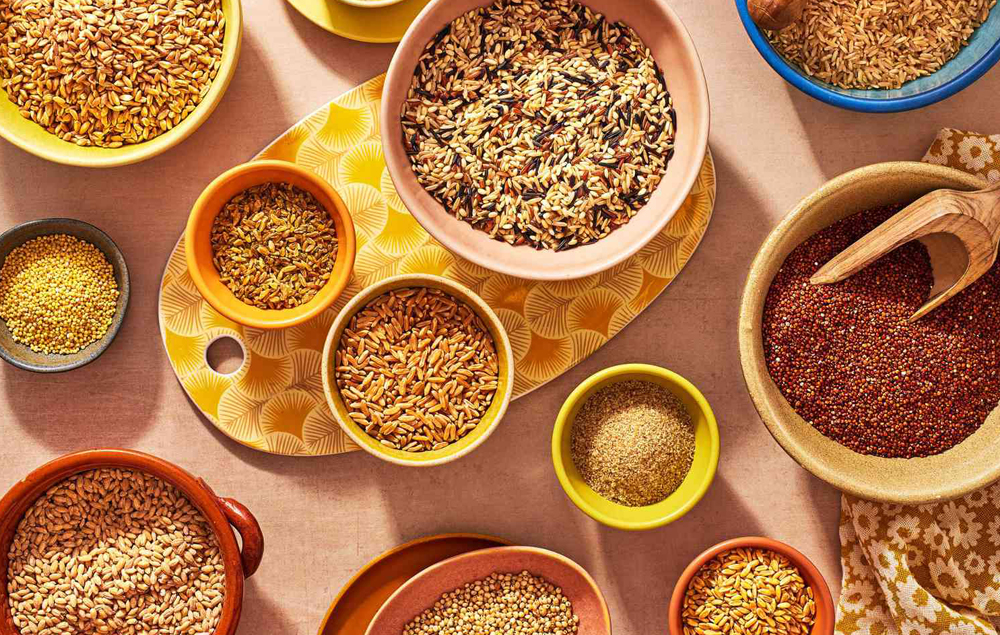
Blueberries are one of the more potent foods in terms of protecting the brain
The MIND diet has 15 dietary components, including 10 “brain-healthy food groups” — green leafy vegetables, other vegetables, nuts, berries, beans, whole grains, fish, poultry, olive oil and wine — and five unhealthy groups that comprise red meats, butter and stick margarine, cheese, pastries and sweets, and fried or fast food.
One should limit the intake of the designated unhealthy foods, especially butter (less than 1 tablespoon a day), cheese, and fried or fast food (less than a serving a week for any of the three), to have a real shot. The longer a person eats the MIND diet, the less risk that person will have of developing AD.
Disclaimer
The Content is not intended to be a substitute for professional medical advice, diagnosis, or treatment. Always seek the advice of your physician or other qualified health provider with any questions you may have regarding a medical condition.
The term “biosimilars” sounds like something straight out of a science-fiction novel, but luckily they’re real advances in medicine. But, to better understand them, we must first understand a type of medicine called biologics. So, let’s back up.
Most medicines people take are small molecule drugs, which means they have a simple chemical structure and are relatively easy to make. They include many common medications like aspirin and antibiotics.
Biologics are a different, newer type of medicine that are made of large, organic macromolecules, usually proteins. They’re much more complex than small molecule drugs. Examples of biologics are immunotherapy to treat cancer, stem cell therapies for a variety of complex conditions and vaccines to prevent infectious diseases.
“Biologics are medicines made from living cells — think proteins like antibodies, hormones or enzymes,” explained Annie DePasquale, M.D., board-certified family medicine physician and founder at Collaborating Docs. “Traditional drugs (like most tablets) are small, chemically synthesized molecules that are identical batch to batch. Biologics are grown in living systems, so they’re naturally more variable and require extremely tight quality controls.”
Think of it this way: Each chemical is like a building block. Put a few blocks together in a certain way, and you get a small molecule drug. Anyone who has the same building blocks and puts them together in the same way can make an exact copy of the original. When this is done in the world of small molecule drugs, we get generic medicines. They’re exact copies of original, branded medications — just without the brand, which usually makes them less expensive.
Biologics are a lot more complicated. Instead of a simple structure made of a few dozen chemical building blocks, these macromolecules have thousands of pieces in a very complex arrangement. Making a biologic drug takes a lot more than clicking each piece into place. They’re organic compounds and have to be made in living cells, using DNA technology.
When you make a copy of a biologic to increase access to this therapy, you get a biosimilar, a therapy that is equally safe and effective to the therapy it copied. However, there are differences in structure. Think of it like baking bread. You can use the same ingredients and follow the same recipe, but each loaf of bread is a little bit different. The biosimilar copies of the biologic are not precisely identical to the originals, but they are very similar. Most importantly, they have the same safety and effectiveness.
Generic medicines give us access to the same treatments at a lower cost. Biosimilars, like generics, make certain advanced treatments more affordable and accessible.
Biologics are very expensive. It might take over 10 years and cost billions of dollars to develop a single biologic. That cost gets passed on to patients and insurers. “Even after competition begins, biologics remain costlier to make than most pills, which is where biosimilars come in to help lower costs,” DePasquale said.
Biosimilars aren’t exactly cheap: They also take years to develop and still cost millions of dollars. But the total development cost is much less than an original biologic. So, they can be approved for use faster and with less expense. This cost reduction could help even out some disparities. People in historically marginalized groups, especially if they have public insurance, are less likely to fill their prescriptions for biologics. With more affordable biosimilars, more people can benefit from advanced medicines.
iStock.com/Alernon77
Like biologics, biosimilars are made through a complex process using DNA technology.
First, the genetic code for a specific protein is inserted into living cells. These cells might be yeast, bacteria, plant or animal cells. The cells “read” the code like a recipe and then get to work producing large amounts of the protein. They’re like billions of tiny, organic kitchens. And they have high standards. The environment has to be strictly controlled so the conditions are right. Once the cells have created the protein, it is isolated and purified for use as a biosimilar medicine. These medicines can then be delivered to patients as injections or IV infusions.
So, are biosimilars just as safe and effective as the original biologics? The answer is yes. “Biosimilars go through a rigorous FDA review using a ‘totality of evidence’ approach,” DePasquale said. “That includes analytical testing to show high similarity, studies of how the drug behaves in the body, immunogenicity assessments (risk of the body reacting to the protein) and at least one clinical study to confirm no meaningful differences.”
A biosimilar has to match the original biologic (called a reference product) very closely to be considered bioequivalent:
The bottom line: Biosimilars have no clinically meaningful difference from the original reference product. They work the same way. They provide the same benefits. “In head-to-head comparisons, biosimilars perform equivalently to their reference products in the conditions they’re approved to treat,” said DePasquale. “Many patients have switched from a reference biologic to a biosimilar without any loss of effectiveness or new safety issues.”
Biologics and biosimilars can treat “a wide range of conditions that [have a greater impact on] women or often arise in midlife,” explained DePasquale:
Biosimilars are advanced medicines, and they can mimic natural biological processes in the body. They target and bind to specific cells, interact with proteins, and block or trigger immune responses. So they’re very useful in preventing certain cells from doing the things that cause diseases to worsen or spread. With the lowered cost and increased access of biosimilars, more women can get the best possible treatment to live their best lives.
This educational resource was created with support from Sandoz.
From Your Site Articles
Related Articles Around the Web
If you’re exploring all the tools that can help you feel and perform better, you may also be researching clinically-supported options such as weight loss drugs from Canada alongside nutrition and training. Medication isn’t a shortcut, but for some women—especially those navigating insulin resistance or Type 2 diabetes—it can be a helpful adjunct to a solid plan built on protein-forward meals, strength training, daily steps, and cycle-synced recovery.
Why this matters for women’s health: multiple diabetes associations highlight that modest, sustained weight loss (5–7% of body weight) can improve glycemic control, blood pressure, triglycerides, sleep apnea symptoms, and quality of life. National diabetes organizations report that more than 1 in 10 adults live with diabetes and a large share have prediabetes, often undiagnosed. In Canada, diabetes organizations estimate over 11 million people are living with diabetes or prediabetes, while U.S. figures exceed 38 million with diabetes and many tens of millions with prediabetes. Across both countries, clinical guidance consistently points to nutrition, physical activity, and weight reduction as first-line therapy, with medications considered case-by-case—particularly when A1C targets aren’t reached with lifestyle alone.
How cycle-syncing pairs with diabetes-friendly nutrition
Medication, appetite, and the “plan you can stick to”
A cycle-synced, diabetes-friendly sample day (Luteal phase)
● Breakfast: Protein oats (oats + whey/plant protein + chia + blueberries). Coffee, if you like, consider a small splash of milk vs. sweetened creamers.
● Mid-morning: Walk meeting—15 minutes outdoors.
● Lunch: Big PFV bowl: grilled chicken or tofu, roasted veggies, lentils, olive-oil vinaigrette; add pickled veg for crunch.
● Snack: Cottage cheese with pineapple or an apple + 1 tbsp peanut butter.
● Workout: 40–50 minutes strength (goblet squat, RDL, row, incline press, carries).
● Dinner: Shrimp stir-fry with mixed veg and jasmine rice or tempeh fajita bowl with beans
and peppers.
● Evening ritual: Screens dimmed, herbal tea, 10 pages of fiction. If a sweet tooth hits, take it inside the plan (e.g., 150–200 kcal frozen Greek yogurt bar).
PCOS, perimenopause, and thyroid notes
How to know it’s working (without obsessing over the scale)
Women’s bodies aren’t inconsistent—they’re cyclical. When your plan respects that rhythm, fat loss becomes simpler, steadier, and far more humane. Keep the cornerstones (protein, fiber, lifting, steps, sleep), steer with your cycle, and—if your clinician recommends it—consider whether medication support could help you stick to the plan you already believe in. Every habit above is compatible with diabetes-association guidance and designed to protect muscle, tame hunger, and support healthy blood sugars. Give the framework 8–12 weeks and track the quiet wins: how your clothes fit, how you move, and how you feel in your own skin.
Disclaimer
The Content is not intended to be a substitute for professional medical advice, diagnosis, or treatment. Always seek the advice of your physician or other qualified health provider with any questions you may have regarding a medical condition.
In recent years, many Canadians have noticed that their daily lives feel more rushed than ever. For many people, this pace feels less like a choice and more like a routine that is hard to step away from.
Slow living is gaining attention as a meaningful way to rethink how time is spent. It is not about stepping away from responsibilities. Instead, it is about making intentional decisions that bring balance. The science behind slow living shows that when people create space in their day for mindful routines, the body and mind respond in positive ways.
This lifestyle offers an approachable path to living with more presence, enjoyment, and ease.
Studies show that taking time for slower routines helps maintain steady heart rate patterns and supports clear thinking. When the body is not rushed, it responds with balance. When the mind is not distracted, it can focus more effectively.
This does not mean that people need to change everything about their routines. It means that even a few slower choices during the day can have an impact. Reading for ten minutes before bed, preparing food without multitasking, or sitting quietly in a park are all examples of activities that encourage the body and mind to align with a slower rhythm.
Food preparation and eating are central to slow living. Cooking at home, using fresh ingredients, and enjoying meals without rushing allows people to engage with food more fully. Studies show that preparing meals at home is linked with better nutritional outcomes because it encourages a variety of whole ingredients.
Many people are also becoming interested in exploring additional ways to support wellness alongside balanced meals. Some choose to add health-friendly supplements by brands like USANA Health Sciences to their routines. This can complement nutritious food while keeping the focus on mindful choices. What matters most is creating a pattern of nourishment that feels intentional and enjoyable.
Nature offers one of the simplest ways to practise slow living. Research shows that spending even a short amount of time outdoors helps maintain balanced body rhythms and supports overall feelings of wellness. Canadians are in a unique position to enjoy natural landscapes, whether that means walking in a local park, gardening in the backyard, or exploring the trails near lakes and forests.
Being outdoors allows the mind to reset from the constant demands of technology and schedules. Even in urban areas, finding a quiet bench, noticing seasonal changes, or tending to a balcony garden can create moments of connection. These small interactions with nature remind people to move at a slower pace and notice the details around them.
One of the foundations of slow living is reducing the number of small decisions that take up mental space. Research in behavioural science shows that people make an estimated 35,000 choices per day, and many of these decisions involve food, schedules, or digital activity. While these choices seem minor, they can add up and create what experts call decision fatigue.
Simplifying everyday choices helps create more room for focus. This might mean planning weekly meals in advance, choosing a small but versatile wardrobe, or organizing spaces so that items are easy to find. These actions reduce unnecessary decisions and leave more energy for meaningful activities. By making daily routines more predictable, slow living allows space for a steadier rhythm throughout the day.
Slow living also highlights the importance of relationships. Research from the Canadian Index of Wellbeing shows that social connections are directly linked to how satisfied people feel with their lives. When people spend time with family, friends, or their communities in intentional ways, it can create a sense of belonging and support.
Simple practices like enjoying meals together without distractions, scheduling weekly calls with loved ones, or participating in local events can nurture these bonds. The key is presence. Being fully engaged in conversations and activities, without multitasking, creates stronger and more lasting connections. In this way, slow living is not only about personal well-being but also about building supportive communities.
Technology has become an essential part of modern life, but it can also contribute to a sense of urgency. Canadians, on average, spend over 25 hours per week online, according to the Canadian Internet Use Survey. While technology offers many benefits, setting healthy boundaries with devices can help align with the principles of slow living.
Practical steps include turning off non-essential notifications, setting screen-free times during meals, or dedicating certain hours of the day to offline activities. Some people also find value in using apps that track screen use and encourage mindful breaks. These strategies do not require giving up technology but instead support a balanced relationship with it. Digital balance allows people to use technology as a tool while still creating room for slower and more intentional moments.
Adopting a slower lifestyle does not mean changing everything at once. Research on habit formation shows that making small, repeated changes is the most effective way to build lasting routines. Starting with one or two adjustments can make the process manageable and enjoyable.
Examples include beginning the day with five minutes of stretching, setting aside one evening per week for a phone-free family dinner, or taking a short walk outdoors during lunch breaks. These steps are simple, but they create a foundation for a slower rhythm. Over time, small choices begin to shape a lifestyle that feels more balanced. The goal is not perfection but consistency, which leads to steady and meaningful change.
Slow living is not about doing less. It is about choosing to do things with greater presence and intention. Research supports the idea that slowing down can help maintain balanced routines, support meaningful relationships, and create more time for activities that matter.
This approach can begin with simple actions like mindful meals, time in nature, or reduced digital distractions. It is a lifestyle that can be tailored to different needs, schedules, and preferences. The science shows that when people allow themselves to live at a slower pace, they open the door to greater awareness and enjoyment of everyday life.
By making intentional choices, anyone can begin to explore the benefits of slow living. It is not about stepping away from responsibilities but about reshaping routines so that life feels more steady, connected, and fulfilling.
Disclaimer
The Content is not intended to be a substitute for professional medical advice, diagnosis, or treatment. Always seek the advice of your physician or other qualified health provider with any questions you may have regarding a medical condition.
If you have asthma, you know how terrifying it is when an asthma attack makes it feel like the air has been sucked out of the room and you’re struggling to breathe.
But asthma attacks are not just terrifying, they can also be life-threatening for some people. And they’re a sign that your asthma is not being well controlled.
One common treatment option is anti-inflammatory drugs called corticosteroids, which have been a go-to treatment for asthma for a long time. They come in an inhaled and an oral form. If you’re using oral corticosteroids (OCS), you should know that there are risks, and you may need to talk to your healthcare provider (HCP) about changing your treatment plan.
What you need to know about oral corticosteroids
OCS are liquid or pill-form medications that suppress the immune system to reduce and prevent inflammation and swelling from acute asthma attacks or flare-ups and for some cases of severe asthma.
OCS are usually prescribed for five to seven days, which is also called a round or a steroid burst. And while OCS are effective in reducing symptoms, they can lead to side effects and serious health problems.
Side effects of taking oral corticosteroids short-term can include:
Side effects of long-term OCS use can include:
There are several asthma medications available to help decrease inflammation in the airways. OCS are different from other options because they affect the whole body and can lead to serious health problems.
Potential overuse of oral corticosteroids
Despite the health risks associated with OCS, research shows the medication can be overused and over-prescribed. One poll found nearly 8 out of 10 people with an asthma specialist received a prescription for oral corticosteroids from another HCP who wasn’t their specialist.
Although oral corticosteroids are effective and can help with severe or acute symptoms when necessary, excessive use of OCS may be a red flag that your treatment plan needs an upgrade.
So, how do you know if you’re possibly overusing steroid medications? According to newly released Global Initiative for Asthma (GINA) guidelines, two or more rounds of OCS in one year is a sign that your maintenance medications are not working well enough.
You should talk to your HCP about your treatment plan if you have any of these signs that your asthma is not well controlled:
Alternative options to OCS
GINA guidelines recommend reducing the use of OCS with safer alternatives. Alternative treatments to OCS for asthma can include:
Speak up about your increased symptoms
If you’ve taken OCS for an asthma flareup, attack or for increased symptoms more than twice in a year, talk to your HCP about your treatment plan. It’s also a good idea to make an appointment to see an asthma specialist if you don’t already have one. Then take a deep breath — you’ve got this.
This educational resource was created with support from Regeneron and Sanofi, a HealthyWomen Corporate Advisory Council member.
From Your Site Articles
Related Articles Around the Web
I was on Instagram the other night and passed a reel showing a woman in a crop top. She didn’t speak. Subtitles scrolled over her midriff as she pursed her lips and wagged her finger at the camera. “Nobody ever guesses my age right,” she said. “Because I know these anti-aging tricks.” An arrow appeared on the screen pointing to below the reel to the caption. “#1. Drink hot lemon water.”
I didn’t read on because I felt annoyed by this woman who appeared to be no more than 22. But I was curious. I’d heard other people hype up lemon water as an anti-aging elixir, so I went to Google and typed “hot lemon water healthy aging” into a search. A long scroll of articles popped up, along with a ton of social media posts — all praising hot lemon water’s anti-aging effects.
As I poked around, I glimpsed other publications and social media posts claiming other hot beverages could help you age well, too. Tea. Coffee. Turmeric lattes. Was any of this hype worth buying into? Is the fountain of youth just a daily mug of bone broth best served hot? I consulted with two registered dietician nutritionists to get information I could trust.
Some hot beverages do have anti-aging benefits
Emily A. Callahan, MPH, RDN, founder of EAC Health and Nutrition, LLC, and member of HealthyWomen’s Women’s Health Advisory Council, is trained to have a skeptical eye. She’s all too familiar with the worrisome state Americans are in when it comes to nutrition. On the Healthy Eating Index, a tool that evaluates diet quality of the U.S. population, no age group has a score higher than 61 out of 100. That’s a D. Not failing, but close.
And the beverage industry, with its ever-growing array of drinks that are high in calories, sugar and saturated fats is, at large, only making us unhealthier. But Callahan recognizes that there are, in fact, some beverages out there that do boast benefits.
I spoke with both her and Lee Cotton, RDN, about eight non-alcoholic drinks often served hot that have health perks, particularly when it comes to healthy aging.
Lemon (or any fruit) and water
iStock.com/Thai Liang Lim
This combo is good for you because lemon is loaded with antioxidants, especially vitamin C. All fruits contain some type or combination of antioxidants, so you could mix any fruit with water and see benefits. “Antioxidants are important for health because they can prevent or delay cell damage from free radicals — unstable molecules that can damage DNA and prevent healthy aging. Antioxidants can counteract them,” Callahan said.
Tea (green, black, oolong)

iStock.com/webphotographeer
Various teas can help with healthy aging too. Green, black and oolong tea contain not only antioxidants but also potassium, which supports brain function and may help prevent heart disease. Cotton pointed to the benefits of green tea, specifically. “Research indicates it has anti-inflammatory properties that have been studied for cancer prevention,” she said. “There has been some recent research that green tea can help protect against cognitive decline.”
Coffee

iStock.com/EyeEm Mobile GmbH
A wealth of research, including UK Biobank, a long-term biomedical research project studying more than 500,000 UK adults, has found that people who drink coffee daily may live longer. Another long-term study of almost 50,000 women who were followed for 30 years found that drinking caffeinated coffee may help women age better and stay strong mentally and physically.
Callahan zeroed in on the fact that coffee has potassium — a good thing, but it also has a lot of caffeine and whether caffeine is definitively good for you, is not yet clear. We know it has antioxidant properties and, of course, can improve alertness in the moment, but Callahan is quick to point out that too much of it can cause heart palpitations and jitters. She recommended sticking to the FDA’s recommendation of no more than 400 milligrams of caffeine per day.
Turmeric lattes

iStock.com/Maridav
Turmeric lattes are becoming popular and it looks like there’s some health merit to the fad. “They provide an antioxidant boost and anti-inflammatory benefits,” Cotton said. “[But] always consult with your healthcare practitioner because it does have some medication interactions.” Also, too much of a good thing is too much. Overdosing on turmeric can cause some serious side effects.
Hot chocolate
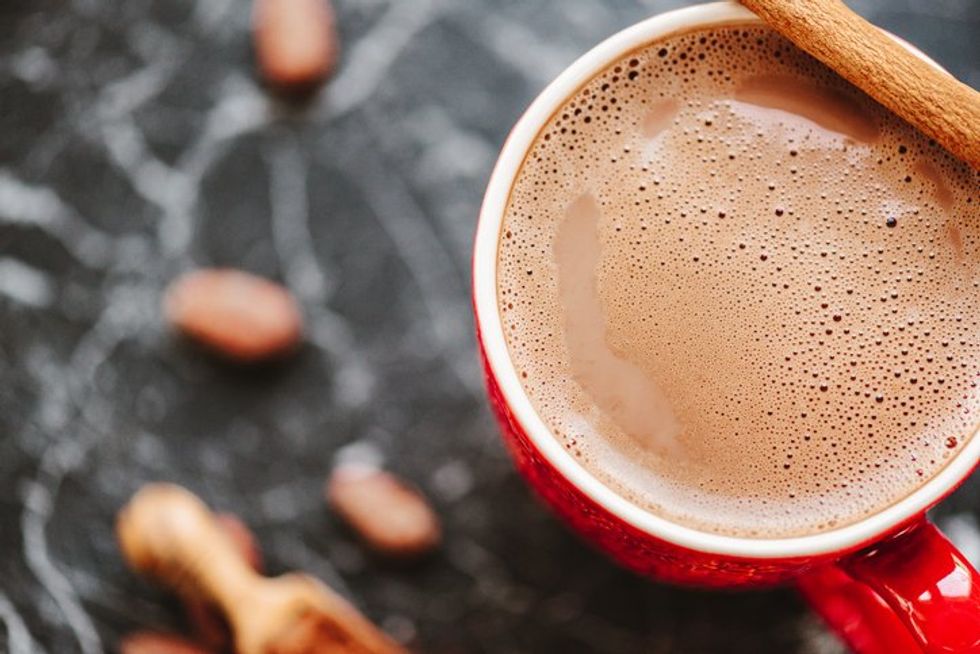
iStock.com/Rocky89
Cocoa is loaded with antioxidants, so hot chocolate can provide a little anti-aging boost (the darker, the better), but beware the excess sugar may cancel out the benefits. “Don’t drink hot chocolate everyday, unless it’s your only added sugar,” Callahan said.
Apple cider

iStock.com/bhofack2
Hot apple cider is a fall and winter favorite, and it has its anti-aging benefits, too. “It contains potassium, fiber and vitamin C,” Cotton said. But this is one of those healthy beverages that can easily turn unhealthy because of all the sugar, so drink mindfully and in moderation.
Steamed milk and non-dairy milk
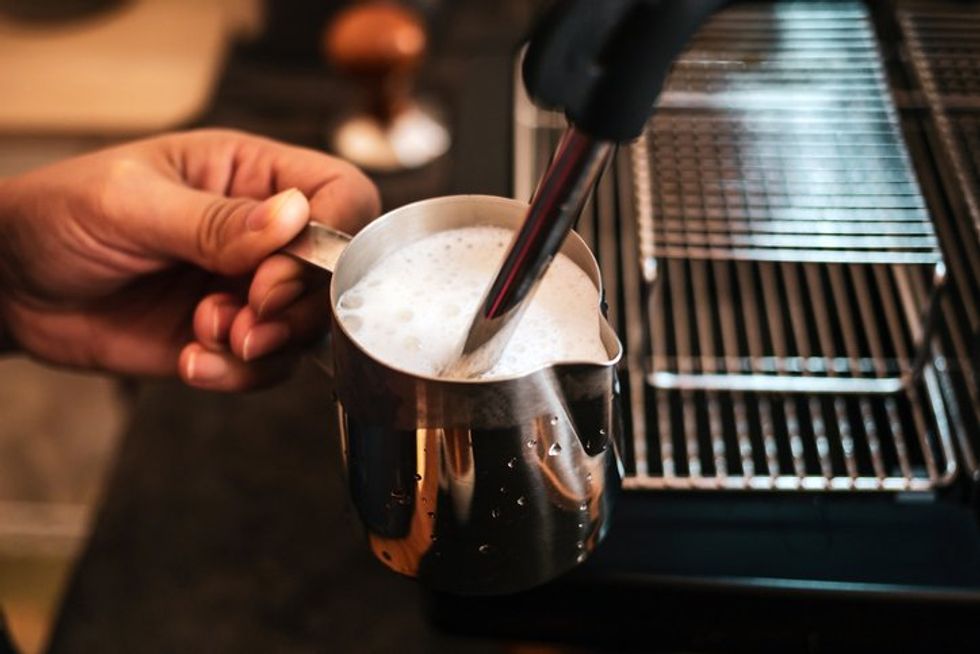
iStock.com/Narong KHUEANKAWE
Both cow’s milk and many non-dairy milks (soy, almond, oat, hemp, rice) contain calcium, which is crucial for bone health. “Calcium is lacking in most of our diets. So it’s beneficial to promote that intake,” Callahan said. “For women, osteoporosis is more common, so that calcium is important to get — especially in our teens and 20s when the foundation for our bones is laid down.”
Bone broth
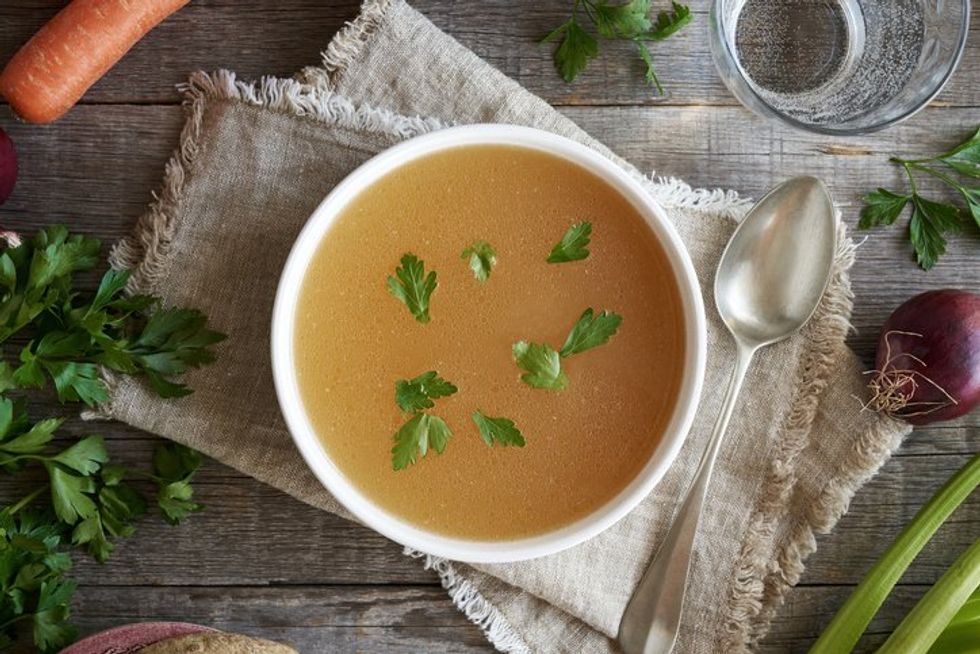
iStock.com/Madeleine_Steinbach
Bone broth is all the rage these days, and though it’s a good source of protein and collagen, and contains small amounts of calcium, magnesium and phosphorus, it’s not — according to what science currently knows about it — an anti-aging miracle drink. “Popular claims about bone broth’s benefits for relieving joint pain, firming skin, improving digestion or strengthening bone are not supported by robust evidence at this time,” Callahan said. “That doesn’t mean that those benefits don’t exist, we just don’t have enough high-quality evidence to know with any certainty whether they do or do not. We also don’t know how much a person would need to drink to experience any benefits that exist.”
Temperature doesn’t matter — and the real benefit with all these drinks has nothing to do with nutrients
Some people prefer these drinks hot, while others prefer them cold. You do you! Whether enjoying them hot or cold, you’ll reap the anti-aging benefits (however big or small) of these beverages. That said, if you’re drinking kombucha, which we left off the list specifically because drinking it hot is a no-no, keep it cold. “Drinking kombucha heated at 115 degrees or above could damage or kill beneficial bacteria or yeasts, so that would not be a good thing,” Callahan said.
Finally, while all these drinks have their health perks (some more than others), it’s worth noting that the best and biggest purpose they serve isn’t healthy aging — it’s hydration, plain and simple.
“The body has requirements for water and the eight cups of water a day is a myth,” Callahan said. We actually need a lot more. The U.S. National Academies of Sciences, Engineering, and Medicine found that the adequate amount of water intake is about 11.5 cups (2.7 liters) a day for women.
“That seems like a lot, but remember, it doesn’t all have to be from water,” Callahan said. Every little bit of hydration you get counts. “It can be from coffee, tea, juice, fruits, vegetables, soups, oatmeal and even pasta.”
So I guess I’ll keep on sipping lemon water — but I’ll take mine on ice.
From Your Site Articles
Related Articles Around the Web
Do you ever catch a glimpse of yourself in the mirror or look at a photo and realize the image in your head no longer matches what you see? Maybe you’re staring at a closet full of clothes that no longer fit, wondering how your body became a stranger overnight. You’re not alone. I was there too—staring down nearly a 100-pound surplus that had crept up like an uninvited guest who wouldn’t leave. My weight loss journey wasn’t a straight path; it was an obstacle course of plateaus and slip-ups. But here’s the good news: every hurdle has a hack, and every story (mine included) proves it’s possible to leap over them.
Deb Levine lost 55 lbs. after an unexpected discovery that she was diabetic. When her eyesight suddenly improved dramatically, her eye doctor urged her to report it to her primary care physician, suspecting diabetes or something even worse. Once diagnosed with diabetes, with her blood sugar regularly in the 200s, Deb began her quest to reclaim her health. She drank lots of water and ate small snacks several times a day, aiming for 100 calories with 10-15 grams of protein and under 15 grams of carbohydrates, spaced 2-2.5 hours apart to allow her blood sugar to stabilize. For main meals, she stuck to 5-7 ounces of lean protein and vegetables while increasing her activity. Deb shares that even walking for 5-10 minutes after a meal, often with her beloved Bernedoodle, Reggie, made a difference. Today, Deb routinely aims for 10,000 steps daily and attends Barre fitness classes three times a week.
Deb shares that one of her biggest hurdles was mindless eating. She soon realized that a handful of anything, even healthy options, could add up and derail her weight loss efforts. Deb’s hack? Eat intentionally! She learned that planning snacks and meals, and pre-planning flexible indulgences, kept her on track. Mindless grazing, regardless of how healthy the choice, was a surefire way to stall progress. To combat sweet cravings, Deb used a unique trick: eating pickles and drinking water. She told herself that if she still wanted the treat afterward, she could have it, but the tangy trick always worked!
After learning she was prediabetic and had high blood pressure, Laurie Bono began her journey to lose 53 lbs. and reclaim her health and energy. Laurie started with Zepbound. After losing 25 lbs., she began strength training, which she describes as one of the best decisions of her life. Laurie acknowledges that without her initial weight loss, she might not have had the confidence to join a strength training class. “I started using Zepbound as a tool, and in addition to vastly improving my fitness activity, I fully embraced changing my eating habits,” she says. One of her biggest challenges was the perceived pressure to drink alcohol and eat at social events, including her daughter’s recent wedding. While she didn’t feel she had a problem with alcohol, Laurie realized she felt better without it. Her strategy for handling peer pressure like “Come on, it’s only one drink” is to decide in advance whether she wants a cocktail, owning her decision rather than letting expectations sweep her away.
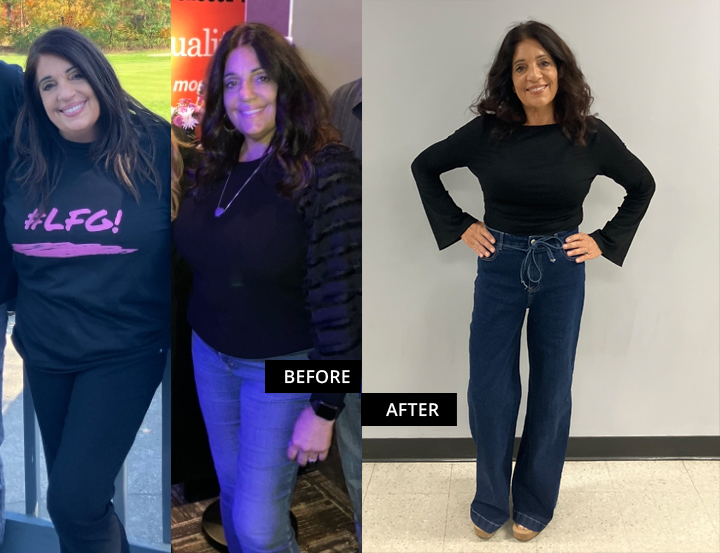
Fending off a ferocious sweet tooth was another hurdle in Laurie’s journey. Desserts were a significant factor in her initial weight gain. To tackle this, she swapped her beloved Brigham’s Ice Cream for Yasso Bars, finding a treat that satisfied cravings without undoing progress.
Awareness is key to her success: knowing her favorite ice cream is in the freezer would tempt her, but having a healthier option keeps her on track without feeling deprived.
Amy Kukta shed an incredible 93 lbs., but acknowledges her journey toward a healthier weight and active lifestyle was far from linear. Several years ago, Amy realized she needed real change and began paying closer attention to her food choices. When the pandemic hit, working from home—away from the office food culture of pizza, cupcakes, and desk candy—gave her a much-needed reset. After being diagnosed with spondylolisthesis and exhausting non-surgical options, Amy underwent spinal fusion. During recovery, she followed her doctor’s advice to walk three times a day for at least 30 minutes and soon found herself walking six miles daily!

Amy also overhauled her nutrition, aiming to fuel healing and fat loss without feeling deprived. She ramped up protein with nutrient-packed staples like sardines, egg whites, low-fat cottage cheese, and fat-free Greek yogurt. She ditched calorie-heavy creams and cheeses, opting for lighter swaps that still satisfied cravings.
Stress, Amy admits, played a major role in her weight loss struggles. When caring for ailing parents, feeling physically and emotionally drained, she leaned on food and alcohol to cope. Realizing that eating to manage stress, sadness, boredom, or celebration wasn’t the answer, Amy now walks off stress when it creeps in. Keeping her hands busy with a fidget toy or stress ball also helps prevent snacking. Another key to her success was prioritizing sleep, which she found instrumental in managing stress.
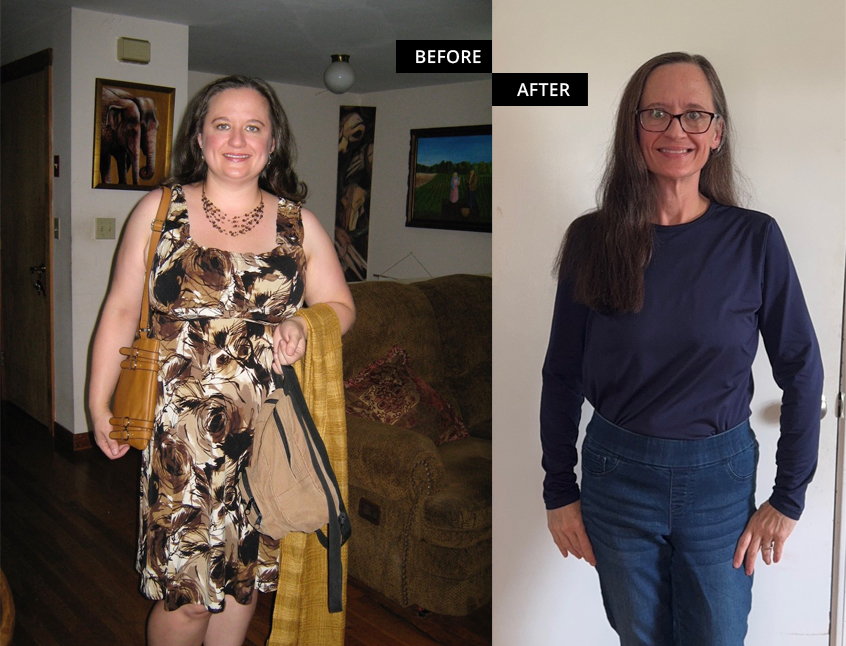
Amy’s love of sweets, ever-present at social gatherings, holidays, and celebrations, was another challenge. Her strategy? Mindful eating. By focusing on macros, prioritizing protein, reducing portions, sharing desserts, and staying within her calorie range, Amy found balance. Her guiding philosophy? “Treat every day as a fresh slate of choices—because staying mindful isn’t just smart; it’s the secret that turns good intentions into lasting success.”
As we’ve journeyed through the inspiring stories of Deb, Laurie, and Amy, who turned their “oh no” moments into “oh yes” victories, it’s time to share my own chapter. My “aha moment” came after being body-shamed by a mean-spirited day spa receptionist when a one-size-fits-all robe didn’t fit me. Despite countless failed attempts to lose weight, this was my defining moment. No more half-hearted promises. I declared war on the unwelcome weight. My strategy was to emulate a fit person’s habits: I started weight training, drank protein shakes, and crafted a diet of lean proteins, leafy greens, and complex carbs to keep me fueled and on track. I kept learning and tweaking as I worked my way down the scale, but hurdles love to pop up unexpectedly.
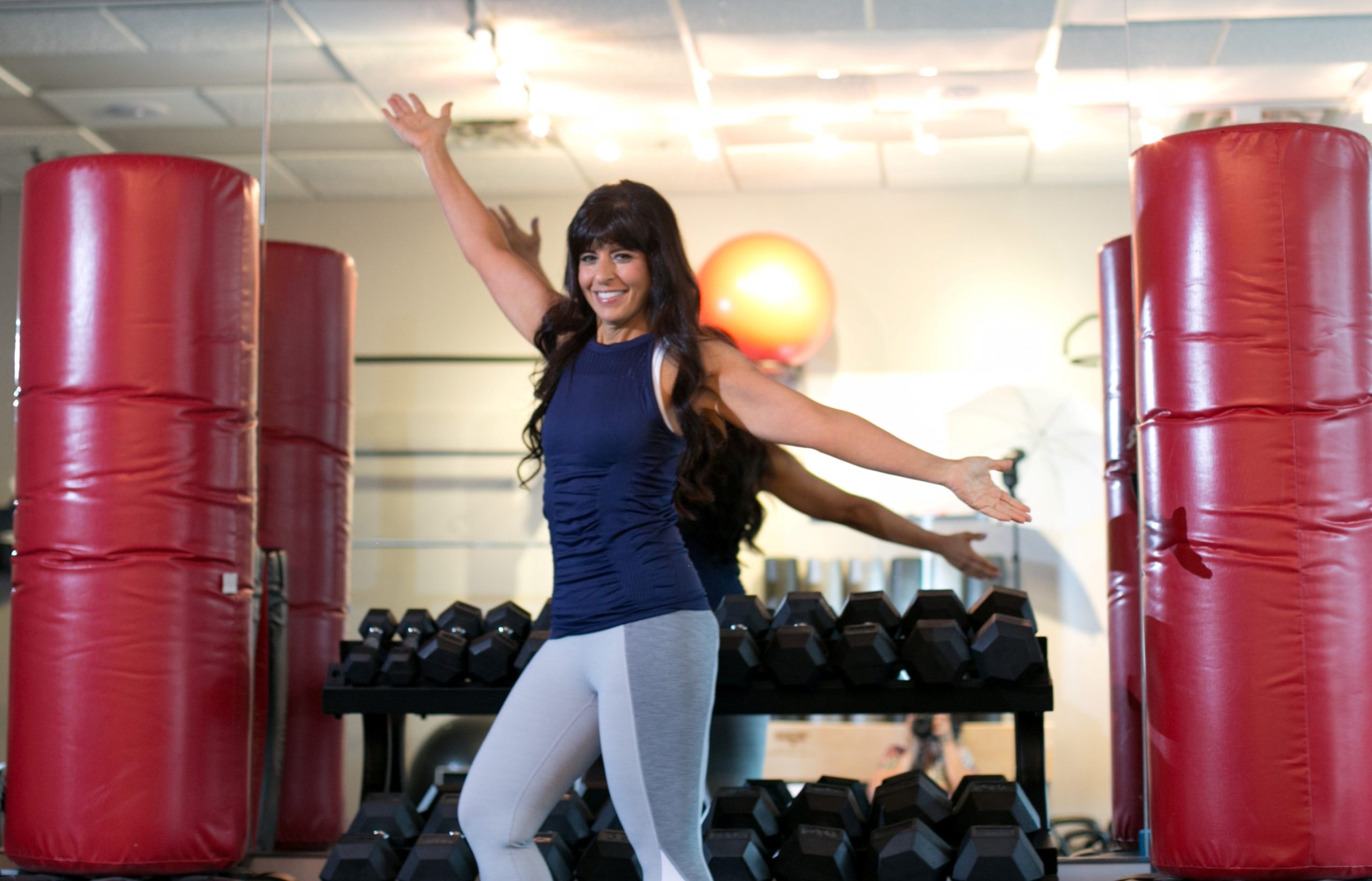
First up: the saboteurs. Not just the siren call of “just this once” or “one bite won’t hurt,” but curveballs from my inner circle, like a well-meaning (or not-so-well-meaning) friend cooing, “C’mon, live a little—you’re no fun anymore!” I learned not to dwell on their motives but to politely and persistently hold my ground. Eventually, my circle realized their efforts to tempt me were futile.
Then there was the trickiest foe: success itself. I call it “the comfortables”—that cozy trap where early wins make you think, “Hey, I’ve got this!” and suddenly you’re slacking like it’s optional. For me, it hit hardest on weekends. I’d stick to the plan all week, then splurge a bit, only to watch the scale yo-yo. I learned the hard way that moderation is for maintenance, not momentum.

Don’t let past failures be a roadblock. It doesn’t matter how many times you’ve tried to lose weight. I felt like I’d done every diet from Atkins to Weight Watchers. It’s okay to take your hundredth first step!
Here’s the plot twist no one warns you about: no matter how many hurdles you clear, there’s no finish line in this marathon. Even now, years after hitting my goal and keeping nearly 100 pounds off, I’m still the vigilant gatekeeper of my choices. A few careless meals, and those pounds start whispering about creeping back. It’s a humbling reminder that consistency and awareness are lifelong sidekicks. My advice? Don’t let past failures define you. My hundredth “first step” was the charm.

These real-life success stories all whisper the same truth: weight loss isn’t a linear journey, but success hinges on facing inevitable hurdles with grit and grace. Every great transformation starts with a single, sincere step—whether it’s your first or your hundredth. You can rewrite your story, one fueled-and-fabulous step at a time.
Charlene Bazarian is a fitness and weight loss success story after losing 96 pounds. She mixes her no-nonsense style of fitness advice with humor on her blog at Fbjfit.com and on Facebook at FBJ Fit and Instagram at @FBJFit.
Disclaimer
The Content is not intended to be a substitute for professional medical advice, diagnosis, or treatment. Always seek the advice of your physician or other qualified health provider with any questions you may have regarding a medical condition.
New Zealand Rugby Player, Olympic Gold Medalist
Believes in “Ultimately, the only real thing about your journey is the step you’re taking right now“
Jazmin Felix-Hotham is a New Zealand rugby sevens player. She plays for the Black Ferns Sevens and represents Waikato provincially. Hotham was a member of the New Zealand Women’s Sevens team when they won a gold medal at the 2024 Summer Olympics in Paris.
Another high school star, Jazmin Hotham made her international debut in the victory at the Sydney Sevens in 2020.
Covid lockdown’s meant it was almost two years before she got another taste World Series Sevens and she has gone on to become a regular in the Black Ferns Sevens. Hotham has impressed on the sevens field since start in Year 10, and in 2017 helped guide her Hamilton Girls’ seven team to a National title before starring in the New Zealand Under 17 team that won the World School Sevens.
Hotham was still attending Hamilton Girls’ High School when she was given a development contract with the Black Ferns Sevens team. In 2017, she helped her school win the National Condors title and also scored the winning try in the World Schools Sevens final.
Hotham was initially chosen to captain the New Zealand girls’ sevens team to the 2018 Youth Olympics, but was ruled out due to a shoulder injury she received while playing representative rugby.
Hotham made her international debut for the Black Ferns sevens in the semi-final against France at the 2020 Sydney Women’s Sevens. She was named as a travelling reserve for the 2021 Olympics squad in Tokyo. Hotham was named in the Black Ferns squad for the 2022 Sevens Series. She made the Black Ferns Sevens squad for the 2022 Commonwealth Games in Birmingham. She won a bronze medal at the event. She later won a silver medal at the Rugby World Cup Sevens in Cape Town.
On 20th June 2024 it was announced that she had been selected as a member of the New Zealand Women’s Rugby Sevens team for the Paris Olympics. Hotham scored four tries over the course of the Olympic sevens competition and won a gold medal after the New Zealand team triumphed against Canada in the final, 19-12.

Medal record Representing New Zealand
Women’s Rugby sevens
Olympic Games
Gold medal – first place 2024 Paris Team competition
Rugby World Cup Sevens
Silver medal – second place 2022 Cape Town Team competition
Commonwealth Games
Bronze medal – third place 2022 Birmingham Team competition
Women Fitness President Ms. Namita Nayyar catches up with Jazmin Felix-Hotham, an exceptionally talented New Zealand rugby sevens player player, here she talks about her fitness regime, and her story to success.
You were born at Henderson, Auckland, New Zealand. As a high school star, you made your international debut in the victory at the Sydney Sevens in 2020.This later propelled your career to the height where you have been at the top of the world as a women rugby player. Tell us more about your professional journey of exceptional hard work, tenacity, and endurance?
I was born in Auckland but grew up in Hamilton. I have four siblings including one sister and three brothers. Both my parents have represented New Zealand in Touch Rugby so naturally myself and my siblings grew up loving and playing all various sports. I tried a lot of sports but my main ones being athletics, swimming, touch rugby and football. My whole family played together in a mixed Touch team and having three brothers I played lots of rugby in the backyard with them. There was never much opportunity for girls to play rugby. In primary school I was the only girl on the team but I played because I just wanted to hang out with all of my mates which at the time were boys.
It was later when I reached high school that I was asked to try out for the school rugby sevens team that was traveling to Japan that I started to properly learn how to play. I really enjoyed it and loved that it provided me with the opportunity to travel to another country. I first watched the Black Ferns Sevens on TV when they competed at the Rio 2016 Olympics. I was 16, and at the time my math teacher Shakira Baker was actually a player in the team along with a few ex Hamilton Girls High students I had played touch with. I think watching them that year ignited this flame inside me that I wanted to one day wear a black jersey and represent my country for rugby sevens at an Olympic games.
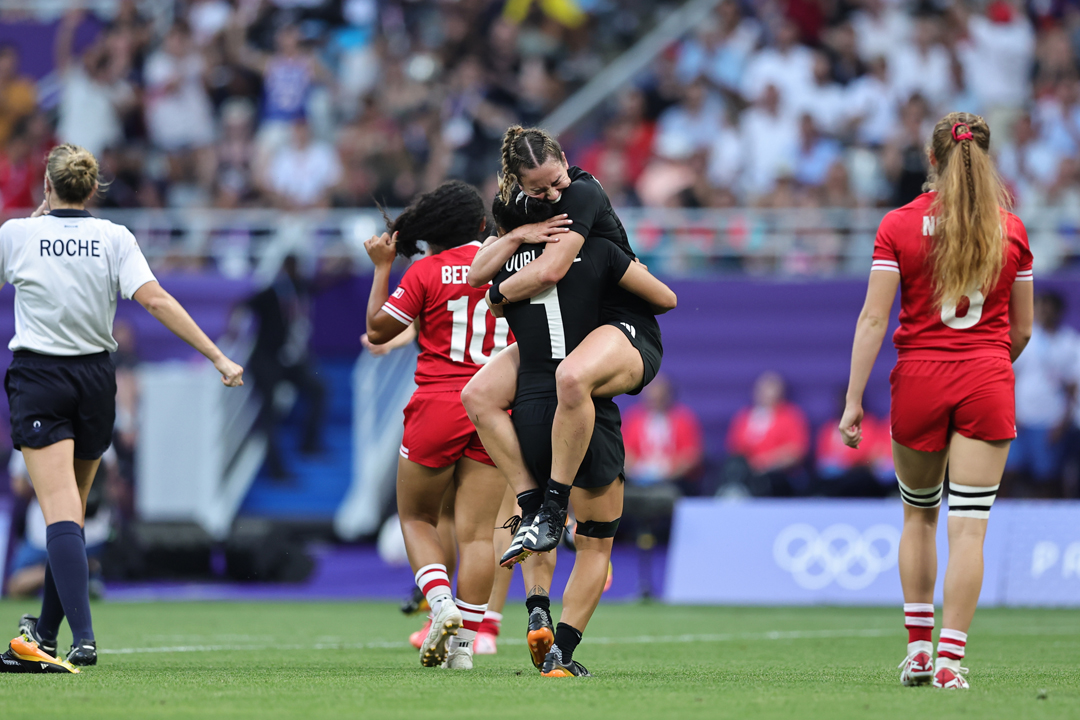
In 2017, after playing for my province at a national tournament the Black Ferns coach rang me asking if I would like to have a year’s training contract with the team. At the time I still had another year of high school so I told the coach I had to ring my parents first and ask if I was allowed. My parents’ only condition was that I was never allowed to fall behind in my school work. Through my last year of high school I would attend week long training camps in Mount Maunganui then go back to Hamilton and attend school. I was the school’s deputy head girl prefect, Sports captain prefect and also a part of the senior touch, Rugby 1st XV and Rugby Sevens teams. I definitely learnt time management and balance that year. In September of 2018 I dislocated my shoulder and needed to have shoulder reconstruction surgery.
A few days after surgery I had a call from Allan Bunting the coach asking if I’d like to be a full time Black Ferns Sevens contracted player and I probably almost redislocated my shoulder jumping up super happy celebrating. In 2019 I moved to Mount Maunganui to be a full time professional Rugby Sevens player.
Full Interview is Continued on Next Page
This interview is exclusive and taken by Namita Nayyar President of womenfitness.net and should not be reproduced, copied, or hosted in part or full anywhere without express permission.
All Written Content Copyright © 2025 Women Fitness
Disclaimer
The Content is not intended to be a substitute for professional medical advice, diagnosis, or treatment. Always seek the advice of your physician or other qualified health provider with any questions you may have regarding a medical condition.
Tal como se relató a Shannon Shelton Miller
Septiembre es el Mes de Concientización del Cáncer Ginecológico
Estaba trabajando en febrero de 2019 cuando mi ginecóloga obstetra me llamó y me preguntó si podía hablar por un momento.
“Preferiría no hacer esto por teléfono, pero es muy grave”, dijo. “Tienes cáncer endometrial de etapa 1 y te voy a referir a un oncólogo”.
Estaba conmocionada. Solo tenía 24 años y aunque experimenté problemas la mayor parte de mi adolescencia y mi vida adulta relacionados con el ciclo reproductivo, nunca imaginé que me diagnosticarían cáncer.
Desde la secundaria, siempre tenía períodos menstruales irregulares que a veces duraban entre 10 y 12 días. En la universidad, empecé a tener aumento de peso, acné y vello facial en exceso. Después de tener consultas con el doctor del campus y mi doctor de cabecera, solo recibí consejos estándar para disminuir de peso y cambiar mi dieta. Traté de explicar que mis hábitos alimenticios no habían cambiado y que aun así seguí aumentando de peso y no sabía qué hacer.
Finalmente tuve una consulta con una ginecóloga obstetra nueva cerca de mi hogar en Richmond, Virginia, quien me preguntó acerca de mis síntomas. Me dijo que estas eran señales frecuentes del síndrome de ovario poliquístico o SOP. Me alegró tener una respuesta pero me pregunté porque nadie sugirió eso hace dos o tres años.
Recuerdo que me dijo que el SOP no podía curarse, así que en mi mente, no tuve motivos para investigar mucho al respecto. Supuse que solo debía controlarlo, pero no me indicaron las medidas que debía implementar, métodos para disminuir de peso ni para abordar los síntomas, aparte del uso de anticonceptivos. Había tomado anticonceptivos antes y no me gustaba como me sentía cuando los tomaba, así que decidí no hacerlo.
Un año después, mis síntomas se volvieron más graves. Tuve hinchazón en el vientre durante meses y el sangrado abundante empezó otra vez. A finales de diciembre de 2018, quise tener una consulta con la proveedora médica que me diagnosticó el SOP, pero estaba de vacaciones. Tuve una consulta con otro doctor, un hombre blanco, por aproximadamente cinco minutos. Sentí que apenas escuchó lo que le dije y no me hicieron la ecografía ni las otras pruebas que solicité.
“Es imposible que usted tenga cáncer”, dijo. “Todo está bien”.
Pero yo sabía que algo estaba mal. La hinchazón de mi vientre nunca desapareció y tenía la apariencia de una mujer embarazada. Llamé al consultorio otra vez en enero y programé una consulta con mi ginecóloga obstetra, quien solicitó una ecografía y otras pruebas. Cuando recibió la imagenología, dijo que estaba preocupada por lo que vio y solicitó una D y C.
Cuando me llamó cinco días después de la consulta, estaba trabajando como profesora de prekínder de una escuela primaria y fui a la sala de profesores para hablar. La doctora me dijo que tenía cáncer endometrial, un tipo de cáncer uterino, y quería ver si podía tener una consulta con un oncólogo ese mismo día. Le dije que sí y llamé a mi familia. Mi mamá, papá y hermano vinieron para llevarme a la consulta.
Aquí es cuando empecé a sentir mucha frustración. Obviamente, estaba frustrada con toda esa experiencia, pero cuando el oncólogo preguntó si alguna vez tomé anticonceptivos para mi SOP, me dijo que debí haberlo hecho porque eso pudo haber prevenido que se desarrolle el cáncer. Si hubiese sabido eso, habría implementado esa medida y también hubiese deseado saber que tenía un SOP antes para haber tenido más tiempo para abordarlo.
2025 (Foto/Keith Nixon)
En vez de eso, estaba teniendo conversaciones sobre la tasa de supervivencia del cáncer endometrial, la preservación de mi fertilidad y seguimiento médico por el resto de mi vida. Fue difícil para mí pensar repentinamente en no poder tener hijos o escuchar que si me trataban y el cáncer reaparecía, debería someterme a una histerectomía total. Mi mamá también tuvo cáncer al mismo tiempo, recibió su diagnóstico seis meses antes, así que mantuvimos conversaciones muy serias acerca de la muerte.
El oncólogo dijo que no tenía que someterme a quimioterapia o radiación porque era muy joven y porque mi cáncer no estaba en una etapa avanzada. Me sometí a terapia hormonal, que consistía en dos píldoras en la mañana y dos en la noche. Afectaba mucho mi cuerpo, aumenté 25 libras de peso, comía todo el tiempo y aun así siempre tenía hambre. Me sentía muy incómoda.
Después de mi tratamiento, mantuve consultas de seguimiento con mi oncólogo cada tres meses para asegurarme de que el cáncer no haya reaparecido. Debía tener las consultas con tanta frecuencia porque era muy joven para este tipo específico de cáncer que usualmente se diagnóstica para mujeres menopáusicas.
Decidí no dejar que el cáncer destruya todos mis sueños. El mes después de mi diagnóstico, viajé a Cuba y luego al parque nacional de Joshua Tree. Mi equipo médico me ayudó a desarrollar un plan para mi vida después del cáncer, desde el seguimiento hasta la preservación de mi fertilidad para cuando esté lista para tener hijos. En 2020, congelé mis óvulos por si necesito usarlos después. Pensar en lo que quería hacer en el futuro me dio tranquilidad.
El año pasado fundé Uterine Care Collaborative, una iniciativa para educar a mujeres de raza negra sobre el cáncer uterino, los fibromas, la endometriosis y el SOP. Es una central comunitaria virtual donde las mujeres pueden aprender sobre esos trastornos, cómo controlarlos y cómo tener conversaciones con las mujeres de tu familia acerca de tus antecedentes médicos familiares. Mi esperanza es que Uterine Care Collaborative se convierta en una plataforma en la cual mujeres puedan aprender y sentirse cómodas mientras tienen estas conversaciones que potencialmente podrían salvar vidas.
En mi capacidad como comunicadora de la salud pública, mi mensaje es que cuidarse a uno mismo es crítico, especialmente para mujeres de raza negra porque debemos luchar contra un sistema que no siempre nos escucha, ve o incluye en las investigaciones y en los ensayos clínicos. Es importante decir a las mujeres “epa, si tienes estos síntomas y te pasa esto en el consultorio, no tienes que aceptarlo. Haz que alguien lo evalúe.” Si la respuesta no te satisface, obtén una segunda opinión.
Siempre he sido una persona religiosa y muy alegre. No puedo pasar el resto de mi vida preocupándome de la posibilidad de que mi cáncer reaparezca o de si sangraré otra vez por ocho meses o de cualquier otra cosa que pueda pasar. El mes pasado, fue muy emocionante cuando mi oncólogo me dijo que finalmente podía tener consultas cada seis meses en vez de cada tres, pero acepto que solo tengo el control de las cosas que puedo controlar.
Ahora tengo 31 años y sé que mi historia no ha terminado. A final de cuentas, todo está en las manos de Dios.
Este recurso educativo se preparó con el apoyo de Merck.
¿Eres una mujer con historias reales que te gustaría compartir? Avísanos
Nuestras historias son experiencias auténticas de mujeres reales. HealthyWomen no avala los puntos de vista, opiniones y experiencias expresados en estas historias y no reflejan necesariamente las políticas o posiciones oficiales de HealthyWomen.
From Your Site Articles
Related Articles Around the Web
We all want to feel confident, radiant, and put-together — but real beauty isn’t about perfection or filters. It’s about balance, self-care, and smart choices that bring out the best version of you from head to toe. As the seasons shift and we step into fall, it’s the perfect time to refresh your beauty routine, inside and out. That means nourishing your body with green juice, getting enough quality sleep (even 5–10 minute power naps), and avoiding common beauty mistakes. These small, consistent habits create the foundation for glowing beautifully.
The old saying is true: when you feel good on the inside, it shows on the outside.
Result: A brighter complexion, better digestion, and an energized start to your day — beauty from the inside out in a single glass.
The simplest rituals deliver the biggest beauty payoff. A daily cup of tea not only soothes the soul but also supports digestion — which is directly linked to skin clarity. Rotate these teas throughout the week to keep your gut balanced and your glow consistent:

Pro tip: Enjoy a warm cup in the evening as a calming ritual — you’ll sleep better, digest more smoothly, and wake up looking refreshed.
Tip: Keep your gua sha stone in the fridge for an extra cooling, de-puffing boost in the morning.


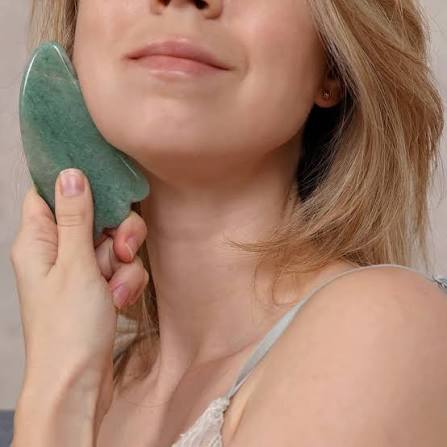

Your hair frames your face, and healthy hair can make you look instantly polished.


Starting your day with hydration, nourishing foods, and gut-loving habits like teas, a green juice, then layer in self-care rituals like dry brushing and gua sha — it all shows up in your skin and energy. Add shiny hair, glowing makeup, and a few smart tricks (think primer, cream blush, and a touch of highlighter), and you’ll radiate confidence and the illusion of flawless beauty — from the inside out!
For more beauty and wellness tips, inspiring guests, and behind-the-scenes magic, listen to my I’m Too Busy ! Podcast , Christina Flach’s Portfolio & follow us on Instagram: @ChristinaFlachMakeup & @ImtooBusyTV
Disclaimer
The Content is not intended to be a substitute for professional medical advice, diagnosis, or treatment. Always seek the advice of your physician or other qualified health provider with any questions you may have regarding a medical condition.